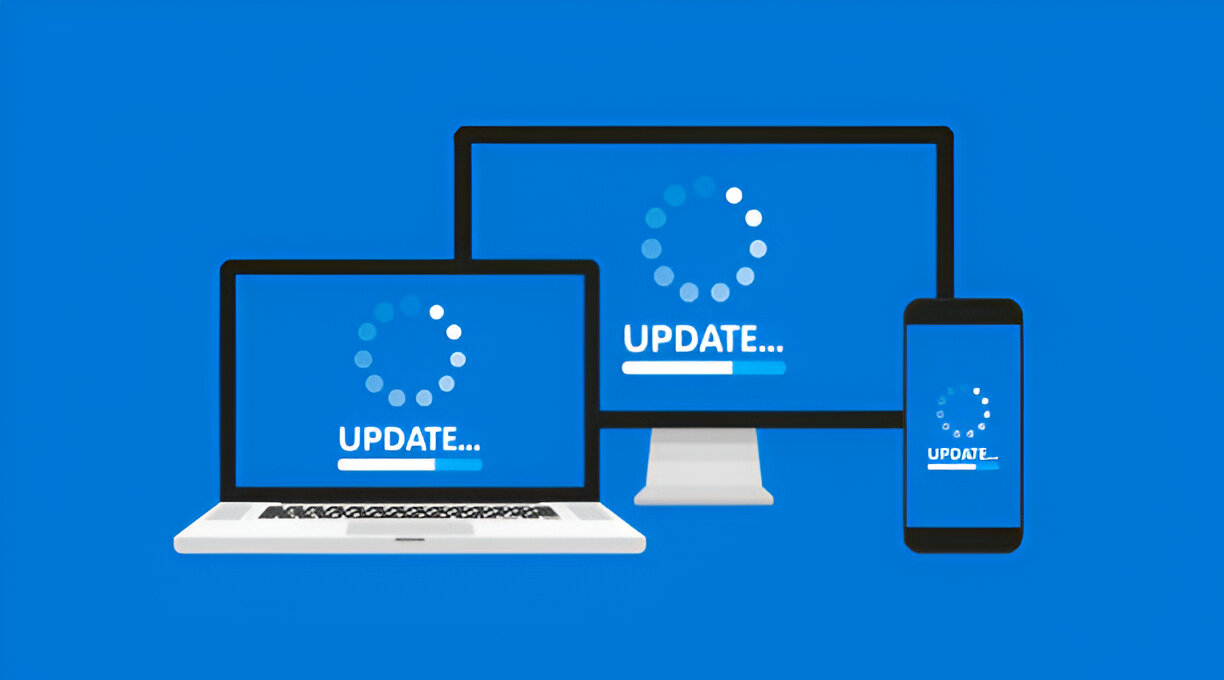When it comes to selling applications, the today’s mobile environment has made App Store Optimization (ASO) a critical success factor. With the number of apps now running into millions in app stores, the competition in is probably harder than it has ever been. In the eyes of the developers, marketers, and other related businesses, ASO is a key method through which an application can go viral and acquire more initial downloads by organic traffic. In this detailed ASO guide, you will learn what ASO is, why it is essential, and ways for developing an effective ASO strategy.
What is ASO?
ASO, also known as App Store Optimization, is a set of measures that helps to increase the number of organic downloads of an app in such store, as Apple App Store or Google Play Store. ASO deals with features which determine an app’s place in the app store search, including keywords, app title, description, screenshots, review and ratings.
ASO is somewhat akin to SEO for websites where SEO focuses on reaching out to Google, ASO aims at reaching the app stores. Since approximately 70% of application discovery involves search within various app stores, app discoverability can either benefit or hinder an application.
Why is ASO Important?
1. Increases Visibility: This may be always the case even the app being developed has the best interfaces and design since ASO can easily bury such an app under millions of other apps. When an application is optimized through ASO then, it makes it easier to acquire new users naturally.
2. Drives Organic Downloads: ASO scare speaks of ‘new’, which to some, means ‘natural’ traffic and implies users in an app store discover an app through a search, not an ad. It can lower acquisition costs by a large extent.
3. Improves User Engagement and Retention: While the basic elements of an app storefront are primarily designed to attract users, ASO improves them to elicit retention in addition to attracting users with descriptions, screenshots, and reviews.
4. Strengthens Brand Recognition: The search benefits gained by achieving high visibility on the app store search results page can increase the brand authority that will make the app the reference app in the category.
5. Saves on Acquisition Costs: In reducing dependence on paid marketing, ASO can be powerfully helpful for developers or businesses with small capital.
Key Elements of ASO
Before elaborating on the specifics of ASO that will help construct the efficient campaign, it is high time to realize the elements that define the app store position. Here’s a breakdown of the key factors:
1. App Title and Subtitle
The title of an app is the first thing that any user sees and is one of the biggest factors in ASO. It should be unique, Should give a clear description about the invention and should contain the relevant keywords many a times while writing. For example, a meditation app might have a title like “Calm: Meditation and Sleep.”
– Best Practices:
There is an advisable customization approach of utilizing high traffic relevant keywords in the initial half of the title.
This should be short and to the point in order to avoid complicating it.
Do not use lots of keywords as it makes the article difficult to read.
2. Keywords
Some marketing experts categorize ASO as a keyword optimization technique at its core. The idea is to find out what real users might enter into a search query that would lead them to apps similar to yours.
– Best Practices:
– Take the help of Sensor Tower or AppTweak to find various high traffic and low competition keywords.
They should ancor on both primary keywords & key phrases such as ‘fitness tracker’ and ‘step counter for women’.
– track keyword and reconsider their use frequently depending on trends and competitors.
3. App Description
The app description is when promotionbegins and can include keywords especially in google play where ranking factors include keywords within the description.
– Best Practices:
It has advised that one should focus on the nitty-gritty of the app that customers should know about and the basic one, which is the area of competitive advantage.
This way the description should remain very clear, interesting and should always bear the user in mind.
– include a button command that will get the reader starting, for example “Download now to start your journey”.

4. App Icon
A small icon that can appear on the home screen of a smartphone represents your app and often determines increased conversion rates. A well-designed, easily recognizable icon entice users and allows them an approximate idea of what the application or software has to offer to them.
– Best Practices:
Inch The perfect timing is also important and using clean, high quality eye-popping design elements should be employed.
It should be clean and not overloaded, and can have no more than one or two shades.
Adjustable icons to see what looks better.
5. Screenshots and Video Previews
Screenshots and video trailers demonstrate a working and a prototype of your application, which helps users understand what they are going to get.
– Best Practices:
Employ superior images that capture your applications key functionalities and do not clutter the page with too many images.
Position screenshots in a manner that presents main concepts initially to the end user.
Produce a brief and entertaining introductory video clip (optional) in which you show how the actual app works.
6. User Ratings and Reviews
They are considered critical to ASO since they decide user trust and credibility of the app, which is likely to be used. Rating data and reviews also reveal that applications associated with high ratings tend to have better ranks and much higher conversion rates.
– Best Practices:
– Persuade people who are happy with the product or service to give their feedback.
Secondly, make sure you reply to the posts as soon as possible, just to demonstrate to consumers that their opinion is valued.
To ensure it has every user’s best interest at heart, it should be able to confront every unfavorable comment or complaint in order to enhance its user interface.
ASO Tools and Platforms
ASO needs to be informed by data due to the stiff competition encountered in the market. The good news is that there are many ASO tools that can be used to assist with keyword identification, competitor analysis and monitoring the results. Here are some popular ASO tools:
– Sensor Tower: It provides advanced information regarding the keyword ranking, app’s performance and competition.
– App Annie: Helps to analyze the app and provides a detailed market insight into the effective performance of the app.
– AppTweak: It applies to do keyword research, track competitors, and monitor exactly where a specific keyword ranks.
– Mobile Action: Designed for competitor analysis and keyword research, it will prove useful for small businesses and startups.
– Keyword Tool: Provides a clear and user-friendly one-click-interface to perform searches for high-ranking keywords for App Store and Google Play.
Developing a Strong ASO Framework
For instance, to win in the ASO market you should map out a good strategy. Here’s a step-by-step approach to creating a successful ASO plan:

1. Competitor analysis
First, to conduct keyword research, start specifying terms that competing applications focus on and how they describe them and illustrate on the app store, respectively. It’s advisable to look for the gaps where your app can stand out and try the potential of such less-popular keywords.
2. Identify Target Keywords
Carry out lots of keyword research to identify the terms particular to your app that are well searched but not heavily competed for. It is, therefore, wise to land on a balance where you incorporate both short and long-tail keywords when promoting the app.
3. App Title and App Description Must be Improved
Place the first keywords into the title, subtitle, and description parts as far as it is possible naturally. When communicating features, make sure the importance of the app is stated as the major point.
4. Choose the Attractive Symbol and Images
The icon, screenshots and video preview can be used to increase interest in your app, although the main part of conversion testing is to choose appropriate visual samples.
5. Post Positive Comments
Remind satisfied users to share positive feedback in form of reviews and ratings. Also, it is necessary to actively communicate with users, answer their feedback, thus users are becoming more confident in the project.
6. Monitor and Adjust
ASO is not a one-off activity but needs to be looked at from time to time and modified. Monitor the position, relevance, and other traffic statistics of the chosen keywords, and adjust your approach to the competition.
5 Common ASO Mistake to Avoid
1. Keyword Stuffing: Even if you get tempted to put all your keywords in the title or description, it will do more harm in the sense that it might turn off the users. Worry about the density of using keywords in the parts of the document that are relevant to the topic.
2. Ignoring User Feedback: Reviews and ratings constitute an important component of ASO. As highlighted in previous sections, failure to heed to users’ recommendations including negative comments lead to a skewed user perception and loss of ranking.
3. Poor Visuals: It is equally bad to capture bad screenshots, ugly icon or record bad trailers of your app as it will go a long way in discouraging users from downloading them.
4. Neglecting Updates: App store algorithms evolve and so do the user search patterns. Keywords, description, and visuals should be updated more frequently bearing current trends in mind.
5. Lack of A/B Testing: To determine what facet works best for your app, you may use A/B testing with the title, icon and their screenshots. Refusing to test means that there is a potential to identify factors that will enhance the conversion rate .
Measuring ASO Success
To gauge the effectiveness of your ASO strategy, focus on the following key performance indicators (KPIs):
1. App Ranking: Monitor your app’s keyword or category ranking to see how noticeable it is on the platform.
2. Download Volume: Measure downloads’ growth to find out whether ASO measures are resulting in more first SNS downloads.
3. Conversion Rate: Assess the percentage of users who install your application after they seen it at the app store. With exceptional conversion rates, it becomes possible to conclude that the process of ASO was successful.
4. User Ratings and Reviews: It will be necessary to pay more attention to reality and analyze different rates and feedbacks to learn more about the user’s satisfaction and possible deficiencies.
5. Retention Rate: Log, for instance, how many users are still using your app after a certain period of time because retention tells of the value and satisfaction gained.
Final Thoughts
ASO is positive for any application that is actually aspiring for natural growth and success in the current market for apps. As with any mobile application marketing and advertising, word choice, the perfect image, user input, and constant reevaluation of the strategy can greatly increase the chances of your app appearing in the app store and subsequently, boost the number of downloads as well as usage. Through ASO, more effort and time is devoted, and in return app ranking is boosted plus familiar brand which is appreciated by the users.
Regardless of whether you are starting a new application or gearing up for enhancing an existing one, the great benefits of ASO strategy cannot be overemphasized; especially improving on the applications visibility and the sustainable growth rate it offers. Thus, it has been keenly identified that, like the ASO trends, in order to enhance the overall performance of the app and have a sustained run in the app store economy, it is always beneficial to review and redesign the ASP strategy.


